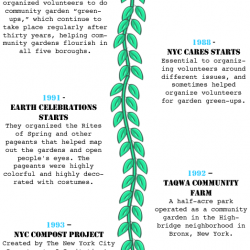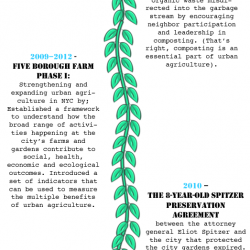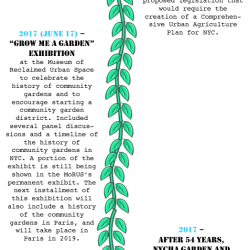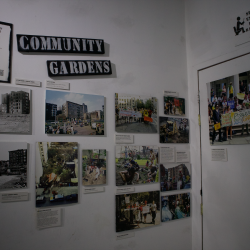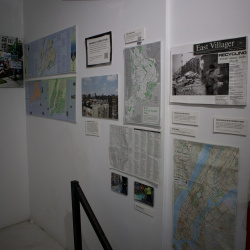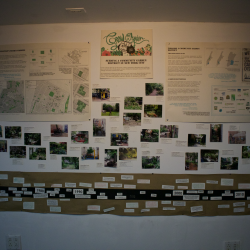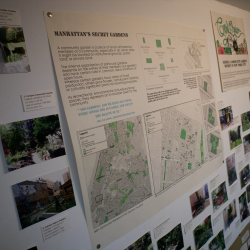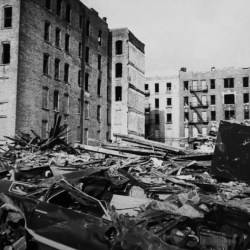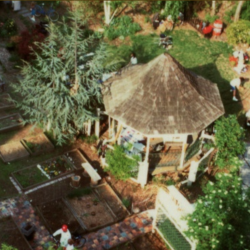Reclaiming Space: Community Gardens
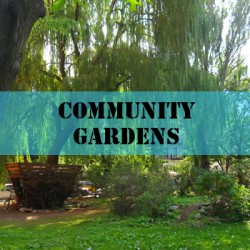
Alongside the squatting movement, neighborhood activists on the LES transformed vacant lots into vibrant community gardens throughout the 70s and 80s. They fought to protect the gardens when the city tried to auction them off to developers, successfully saving 39 — giving the LES the highest concentration of community gardens in the city. Despite being officially recognized by the NYC Department of Parks and Recreation, these gardens remain 100% volunteer-run: a testament to the power of grassroots environmental organizing.
WHAT WE DO
MoRUS helps maintain the LES’ remaining 39 gardens by arranging work days, remediating soil, clearing rubble, planting fruits, vegetables, and herbs, building and improving infrastructure such as sinks, stages, and gazebos, and composting food waste. We also hold workshops on topics such as composting, soil treatments, honeybees, and more. Within the museum, we continue to document the history of the gardens and share that knowledge with our visitors.
WHY COMMUNITY GARDENS MATTER
Providing places for people to garden has been an innovative strategy to improve American urban conditions since the 1890s, when the movement began in New York and Detroit. Many kinds of community gardens came into existence at different times, often associated with times of social and economic change (as described by Laura Lawson in her book City Bountiful: A Century of Community Gardening in America).
New York’s community gardens are unique and important historical artifacts, as well as critical parts of our urban landscape. Several hundred community gardens previously existed in New York City. Many of them were created in the 1970s, when landlords abandoned their buildings, which ended up burnt out and were torn down. Because landlords failed to pay taxes on them, they reverted to the city. Community members mobilized to turn the vacant lots, filled with rubble and other debris, into vibrant gardens and parks.
Community gardens have numerous positive effects. In low-income urban areas, gardens fill a necessary gap in fresh, healthy, and affordable food. As stated in “Food for Thought: The Social Impact of Community Gardens,” published in Electronic Green Journal in 2010, gardens help to make food available, sometimes generating tons of food at a fraction of the cost of supermarket produce. New studies appreciate the benefits in social service costs as well: “by staying active in the garden and practicing better nutrition with fresh produce, gardeners reduce their heart disease, type two diabetes, and obesity, saving on medical care.” As Grace Tankersley comments in her book Community Gardens of the East Village, the gardens contribute “to the physical and psychological well being of individuals and the social cohesion of communities” as well as reduce air and water pollution and provide a lower cost alternative to formal parks.
For the nationwide community gardening movement, see the American Community Gardening Association and international guerilla gardening developments. By raising local awareness of the community gardens and their histories, MoRUS will increase the Lower East Side community’s utilization of these gardens in the short-term and help protect the gardens from developers in the long-term. The success of past activists is inspiring the creation of new community gardens today!

